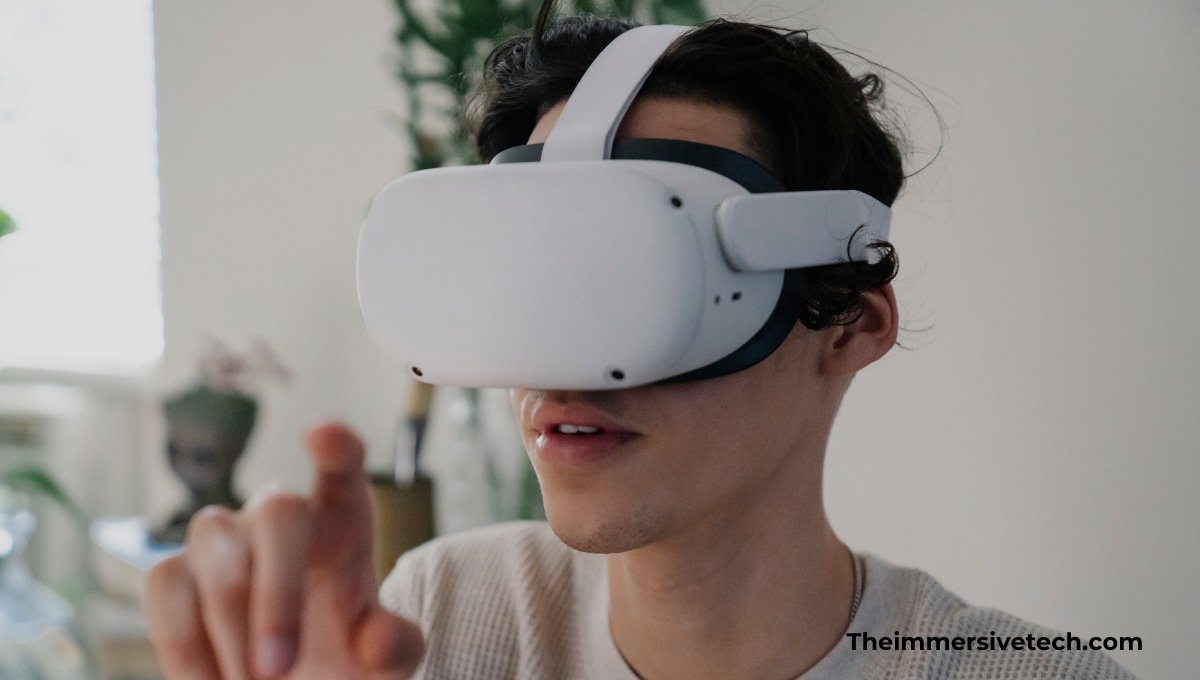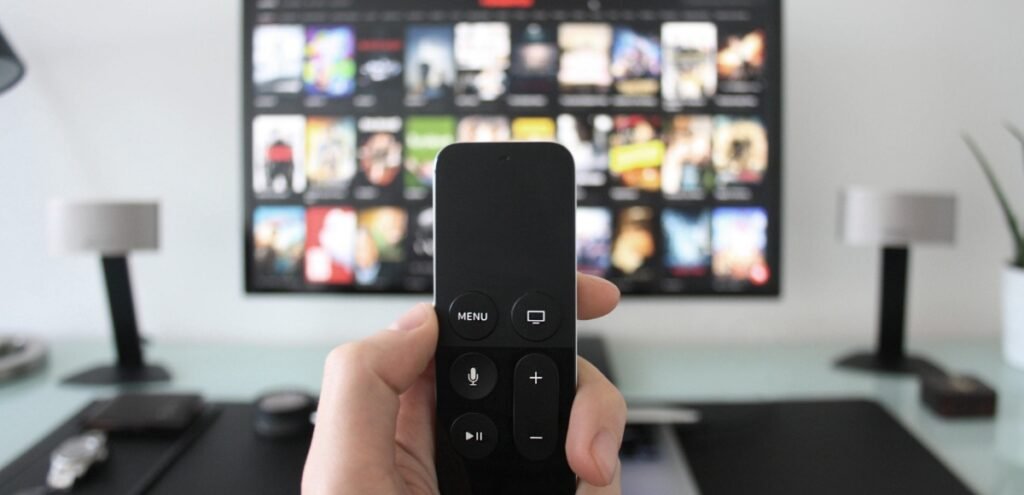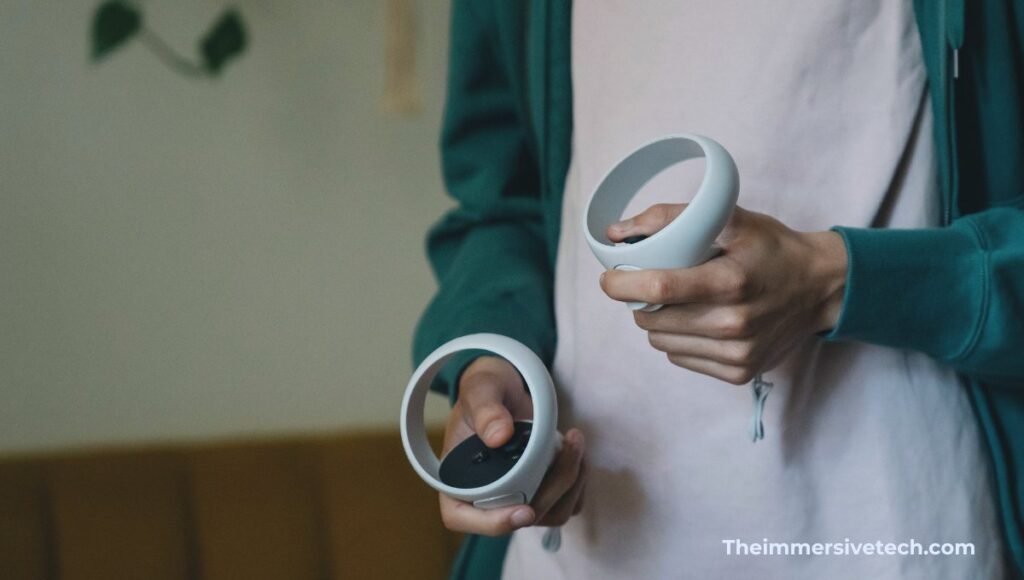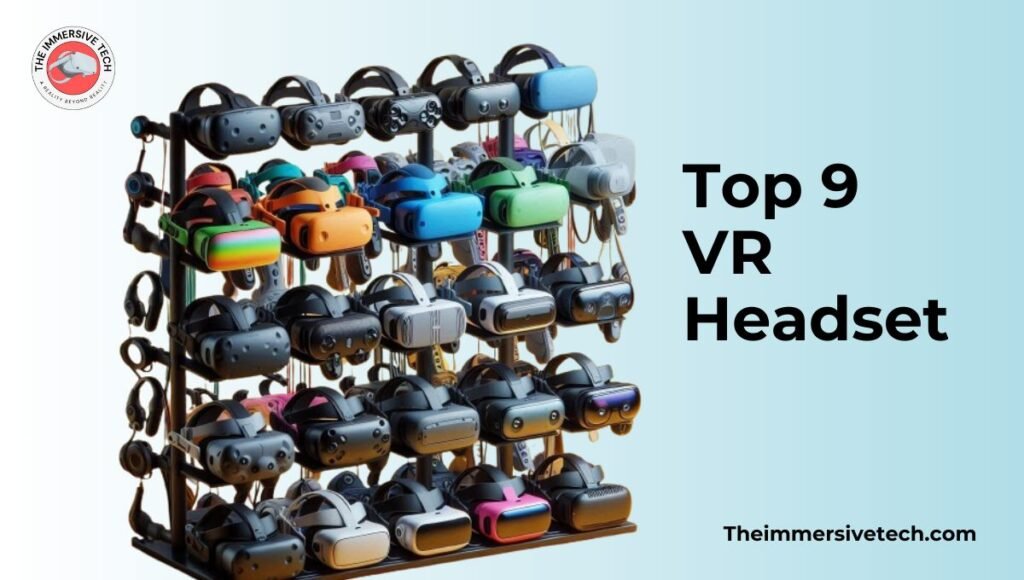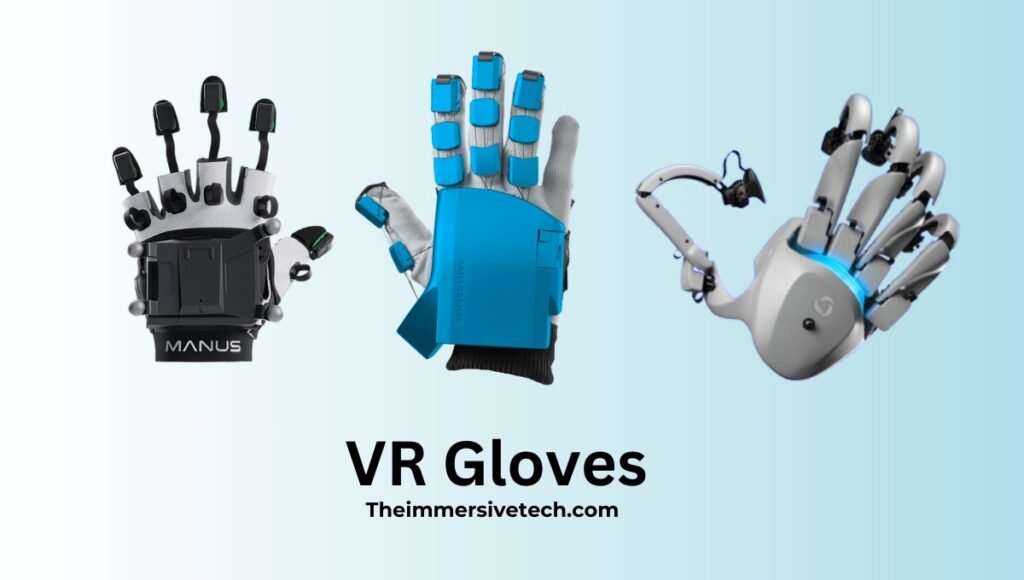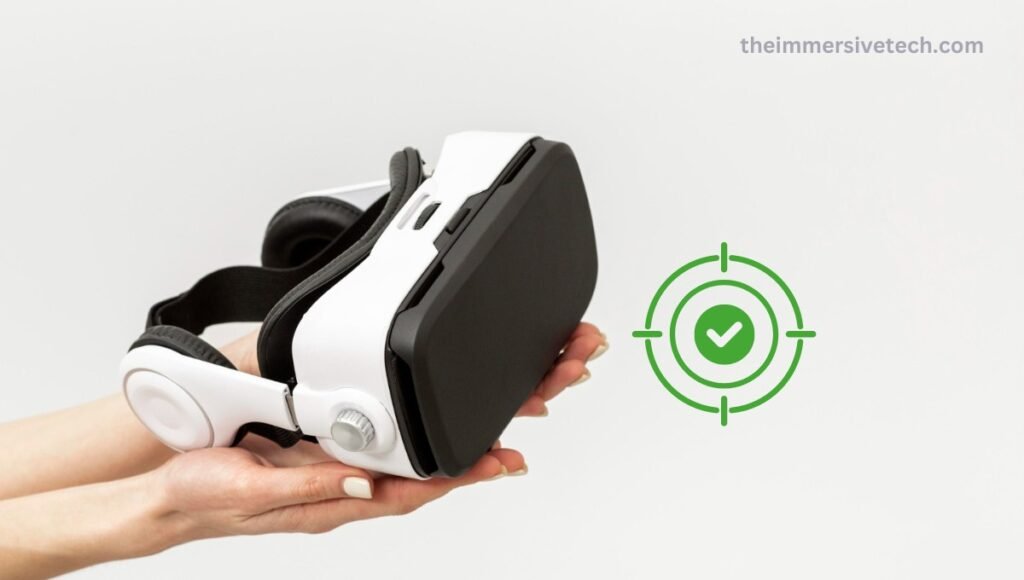Virtual reality has been creating a buzz since standalone headsets came into place. This guide will help you know different types of VR headsets better.
Additionally, if you’re looking forward to getting a new headset to experience virtual reality, our top picks will be the one you’d want to refer to in 2024. So, let’s get started.
What are Virtual Reality Headsets?
VR headsets, also known as virtual-reality headsets, are a head-mounted device that is used to experience virtual reality. Usually, VR headsets have a pair of lenses, screens, and a band to secure them to the user’s head.
Basically, the device goes over your eyes and immerses you into the virtual world.
In order to read full guide on virtual reality- read here
Types of VR Headsets
There are three types of VR headsets: Mobile, PC, and Standalone headsets. Let’s talk about the pros and cons of each of them.
1. Mobile VR headsets
Note: The main headset manufacturers have stopped developing mobile VR headsets, as they focus on standalone headsets now.
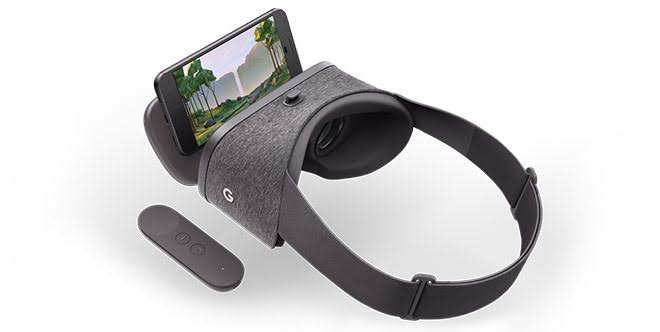
As the name suggests, mobile VR headsets are in the form of shells with lenses where you place your smartphone. The lenses separate the screen into two images for your eyes, creating a VR experience.
Mobile headsets come for usually under $100 because all the processing is done on your phone and you don’t need any wires to connect to the headset. However, they don’t offer the best virtual reality experience as compared to PC-connected or standalone headsets.
Some examples of mobile Virtual Reality headsets are Daydream View, Gear VR, and Merge VR. Note that these headsets may not be supported anymore.
2. PC-connected VR headsets
These headsets are usually costlier than standalone headsets, but at the same time, they also provide the best virtual reality experience. Most PC-connected headsets are tethered with cables from the headset to a PC or a gaming console.
Some of the PC-connected headsets are Vive Cosmos, Oculus Rift, HP Reverb G2, and PlayStation VR.
3. Standalone VR headsets
Unlike PC-connected headsets, standalone VR headsets don’t require any cable, phone, or PC to give a great virtual reality experience. Since these are single pieces of hardware, they are wireless.
Some of the examples of standalone headsets are Meta Quest series, Pico Neo series, and Vive Focus series/XR Elite.
Top Picks for VR Headsets
We have picked 6 virtual reality headsets as our top picks which include the Apple Vision Pro, Meta Quest, and more. Each of these headsets have their own pros and cons. Let’s start with Apple’s VisionOS.
1. Apple Vision Pro
The Apple Vision Pro is said to have the best AR/VR interface among all the other headsets in the market.
Overview
The Apple Vision Pro stirred a short spark on the Internet, as Apple tapped into the AR/VR industry for the first time. The company says that the headset is a “spatial computer” rather than a virtual reality headset.
It relies heavily on eye and hand tracking for controls. Hence, creating a natural control system that feels more immersive. The Apple Vision Pro is good for work or playing games
Here are all the specs of Apple Vision Pro:
Type | Standalone |
Resolution | 22 million pixels |
Refresh Rate | 100 Hz |
Motion Detection | 6DOF |
Controls | Eye and hand tracking |
Hardware Platform | Apple M2 |
Software Platform | Apple VisionOS |
Who’s it for?
So, who is the Apple Vision Pro for? The rich.
The headset is costlier than other affordable headsets in the market — considering it’s from Apple. It costs $3,500. If you’re willing to spend that much on a headset, go for it. But Apple will probably release better and cheaper options in future.
At the end of the day, it’s all your choice.
Pros & Cons
Here are all the pros and cons of Apple Vision Pro:
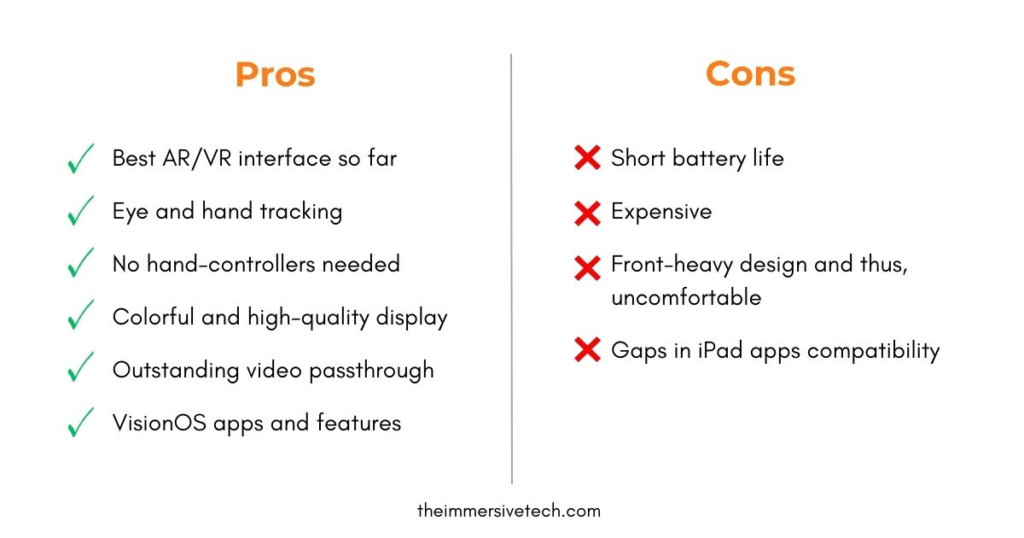
Also read our full guide on difference between AR, VR, and MR
2. Meta Quest 3
Meta Quest 3 is said to be the best standalone VR headset in budget.
Overview
The Meta Quest 3 is $200 more expensive than its preceder, Meta Quest 2. However, the extra cost adds color pass-through cameras that make augmented reality experiences better with a higher resolution. The headset also has a faster processor with more power than even the Quest Pro.
Here are all the specs for Meta Quest 3:
Type | Standalone |
|---|---|
Resolution | 2,064 by 2,208 (per eye) |
Refresh Rate | 120 Hz |
Motion Detection | 6DOF |
Controls | Meta Quest Touch Controllers |
Hardware Platform | Standalone |
Software Platform | Meta |
Who’s it for?
The headset is for people who don’t like cables while turning into a virtual experience. It can show you powerful visuals in which colors pass through. In conclusion, Meta Quest 3 is good if you want to give virtual reality a try for the long-term.
Pros & Cons
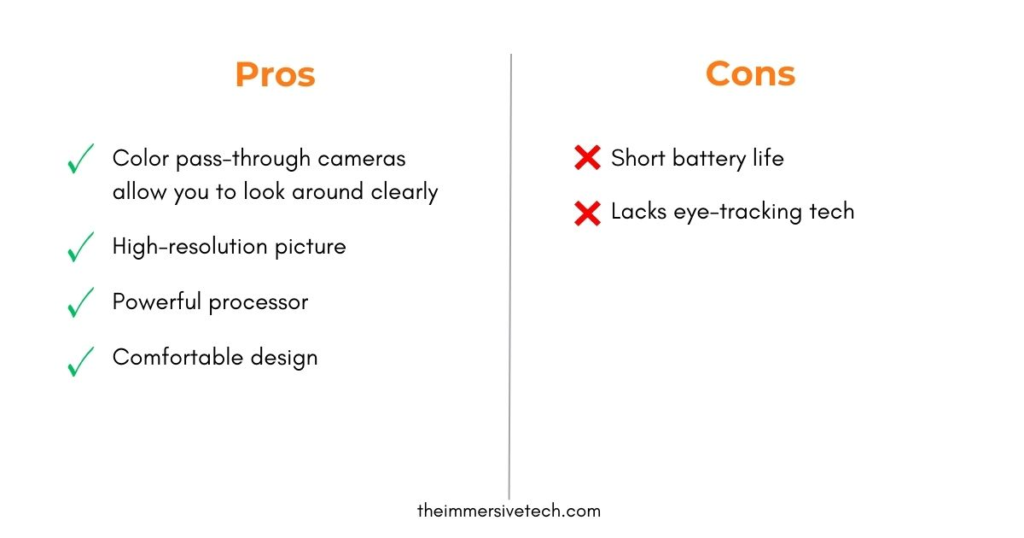
3. Meta Quest Pro
Meta Quest Pro is for the enthusiasts.
Overview
The Meta Quest Pro features cool tech such as eye-tracking and face-tracking features. It costs significantly more than the Quest 2 and Quest 3, the price tag being $999.99.
Here are all the specs for Meta Quest Pro:
Type | Standalone |
|---|---|
Resolution | 1,920 by 1,800 (per eye) |
Refresh Rate | 90 Hz |
Motion Detection | 6DOF |
Controls | Motion Controllers |
Hardware Platform | Standalone |
Software Platform | Meta |
Who’s it for?
If you’ve been into virtual reality for a while and want to explore more, the Meta Quest Pro headset is for you. It is basically for the professionals who need a VR headset for collaboration purposes or pro players who’d like to experiment with eye-tracking and face-tracking tech.
Pros & Cons
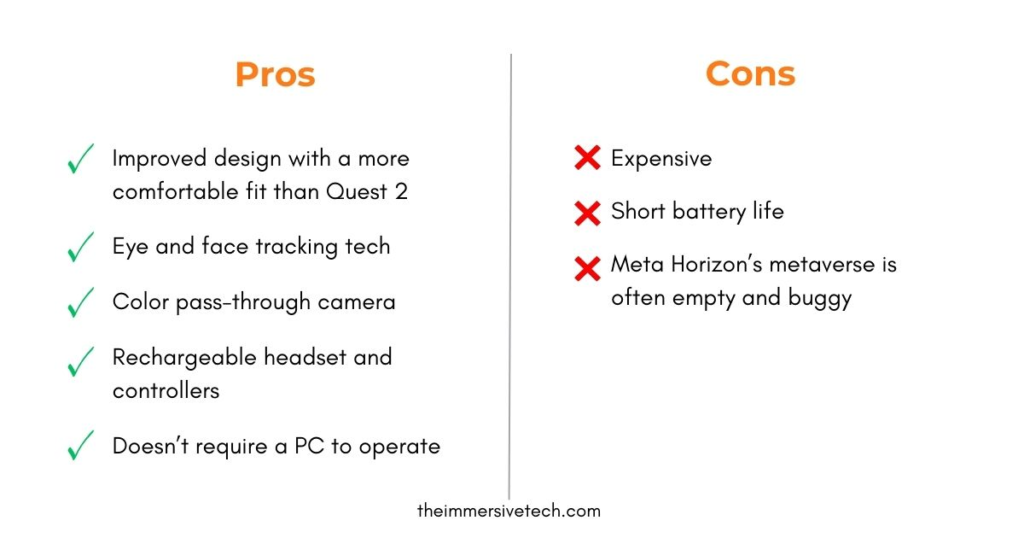
4. Meta Quest 2
The best affordable VR headset you can ever get your hands on is Meta Quest 2.
Overview
Meta Quest 2, also known as Oculus Quest 2, is a $300 standalone headset that can make you experience virtual reality without any cables or any other hardware. The headset is powered by mobile components, specifically the Qualcomm Snapdragon 865 chipset, and thus, it’s enough to run virtual experiences.
Since it doesn’t need any additional hardware, Quest 2 has its own robust library from which you can choose your own experience. However, you can connect the headset with a PC with the $79 Link Cable.
Here are all the specs for Meta Quest 2:
Type | Standalone |
|---|---|
Resolution | 1,832 by 1,920 (per eye) |
Refresh Rate | 120 Hz |
Motion Detection | 6DOF |
Controls | Oculus Touch |
Hardware Platform | Standalone |
Software Platform | Oculus |
Who’s it for?
If you want to try out virtual reality for fun, and on a budget, dropping $300 could get you the basic experience. But to enhance that experience, you can invest into Quest 3 instead which has a faster processor, a higher-resolution display, and color pass-through cameras.
The choice is on you.
Pros & Cons
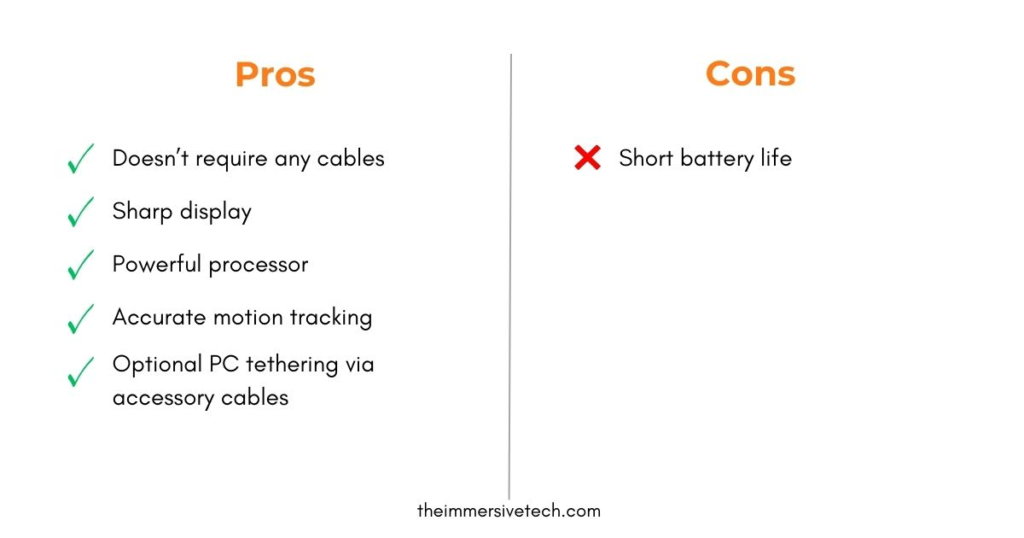
5. Sony PlayStation VR 2
Sony PlayStation VR 2 is made for all the PS5 gamers out there.
Overview
Sony’s PlayStation VR 2 is a great upgrade over the original headset. It combines the PlayStation 5’s power with new eye-tracking and motion control tech that makes gaming more immersive than before. Also, it is lightweight with immersive specs, including a sharp OLED display.
Here are all the specs for Sony PlayStation VR 2:
Type | Tethered |
|---|---|
Resolution | 2,000 by 2,040 (per eye) |
Refresh Rate | 120 Hz |
Motion Detection | 6DOF |
Controls | PlayStation VR2 Sense |
Hardware Platform | PlayStation 5 |
Software Platform | PlayStation 5 |
Who’s it for?
The PlayStation VR 2 is for the gamers who want to dive into Sony’s next-generation vision of virtual reality. It costs $600 but lacks compatibility with original PlayStation VR games. However, the lightweight headset has a strong launch library that includes Horizon: Call of the Mountain and the Jurassic World Aftermath Collection.
Pros & Cons
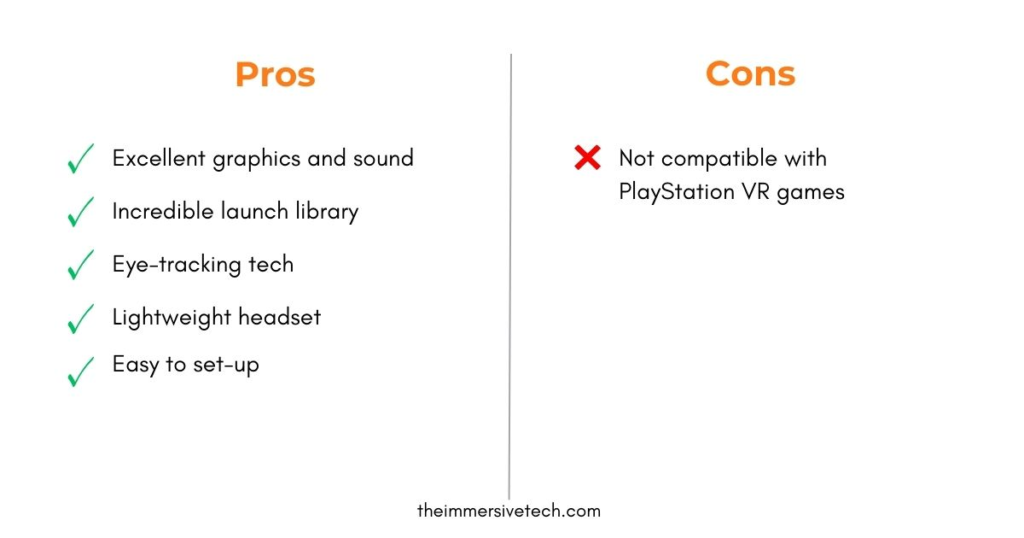
6. HTC Vive Pro 2
The HTC Vive Pro 2 is the best high-resolution VR headset.
Overview
This advanced VR headset can be used by both enthusiasts and professionals with the best resolution of 2,440 by 2,440 pixels per eye. It easily offers the best picture in VR at a price of $799. However, it doesn’t include any base stations or controllers at the price. You can use the Valve Index controllers with it, though.
Just like the Index, it works with SteamVR and has its own VR software store in the form of Viveport. The store offers the subscription-based Viveport Infinity service where you can get access to unlimited VR experiences.
Here are all the specs for HTC Vive Pro 2:
Type | Tethered |
|---|---|
Resolution | 2,440 by 2,440 (per eye) |
Refresh Rate | 120 Hz |
Motion Detection | 6DOF |
Controls | None included |
Hardware Platform | PC |
Software Platform | SteamVR |
Who’s it for?
If you want the best VR experience without getting into the pro-level extremes, you should go ahead with the HTC Vive Pro 2 with the Valve Index controllers. The combination will cost you at least $1,300 but you’ll have the best visuals.
Pros & Cons
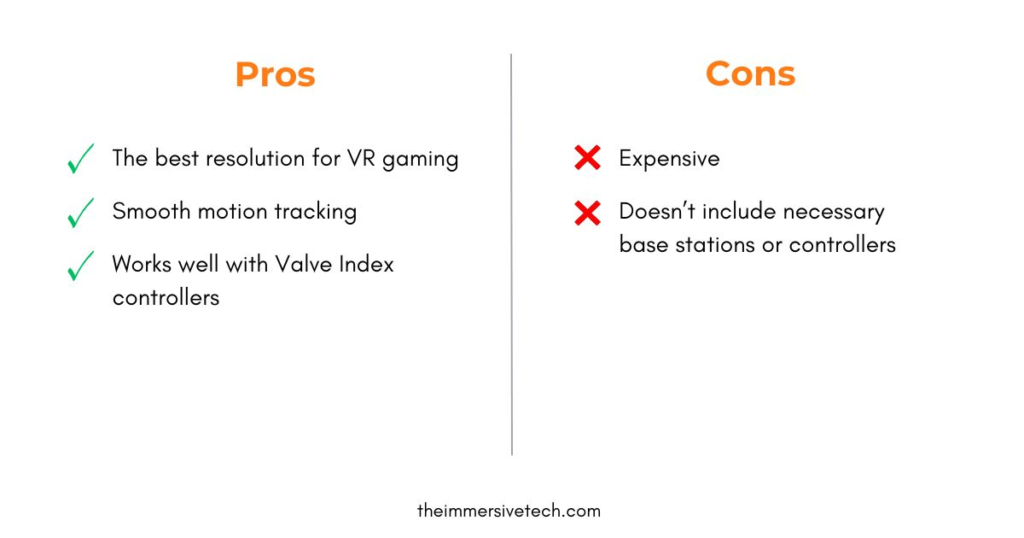
All these headsets are used for a variety of applications which you can read in detail here: Applications of virtual reality
VR Headset Accessories
Apart from the headset itself, most VR experiences require other accessories such as controllers.
- Hand Controllers
VR Headsets such as Meta Quest, Pico Neo, and HP Reverb G2 come with controllers. Each of the two controllers are tracked in 6DOF. However, not every headset comes with controllers, such as the Vive Pro 2. For these headsets, you have to buy controllers as an addition.
- Smell
Companies like OVR Technology are developing scent technology for virtual reality. With this technology, users can pick and smell the scent of virtual things, such as a virtual rose. Once the user pulls the rose away, the smell instantly disappears instead of lingering around.
3 Types of VR Positions & Movements
There are three main types of VR positions and movements tailored for each play area size: Roomscale, seated, and standing.
In Roomscare VR, you set a play area or boundary where you can move freely around the room. So, you can move physically and interact with the simulated environment.
With the Seated and Standing positions, you don’t move around and stay at the same place. To move, one can use hand controllers to move instead of physically moving around.
A Wrap
PC-connected headsets and standalone headsets are the ones that actually provide a good VR experience. However, your experience depends on a lot of other things — including the tech used, battery life, and resolution per eye.
To find out the best headset for yourself, you can refer to our list above. And, if you are interested to understand the working of virtual reality headset, read here.

